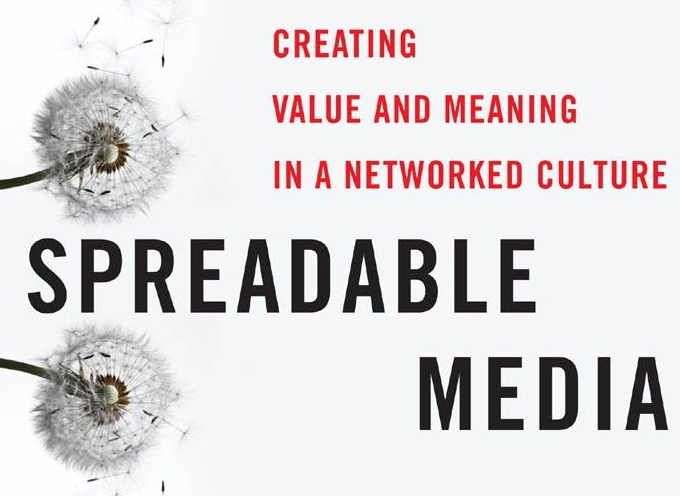
January 17, 2013
“If it doesn’t spread, it’s dead”: With this pithy dictum, Henry Jenkins summed up the nature of media distribution in the Internet age. Introduced as “our new mantra” in a 2007 blog post about Jonathan Lethem and slash fiction, it turned up again as the title of a 2008 white paper from the Convergence Culture Consortium, the initiative Henry launched at MIT to explore the changing dynamics of the media industry. Now it’s the central idea that animates Spreadable Media, the new book he’s written with Sam Ford and Joshua Green, two former C3 colleagues who have moved on to consultancy roles — Sam at Peppercomm Strategic Communications, Joshua at Undercurrent. In whatever context, this idea stands as a corrective to the distribution model of the broadcast era, which presumes that control will rest with whoever puts the product out, not with the people who are the market for it. The levers of power have shifted.
Due out next week from NYU Press, Spreadable Media is an essential read for anyone who wants to understand how media works today. The book begins by contrasting spreadability with stickiness, an earlier measure of online appeal that prevailed during the heyday of “Web portals” like AOL and Yahoo! Stickiness was a Web 1.0 concept that tried to port ideas from the broadcast industry into the Web world — ideas like centralization and pull and pre-structured interactivity, as opposed to dispersal and flow and open-ended participation. But the authors take issue with Web 2.0 as well, and they seem borderline appalled by the “viral” metaphor that has attached itself to the act of online sharing. Participation, they argue, is not a disease, and should not be treated like one. To do so is to denigrate not just the act but the people who doing it — that is, us.
Henry and I have known each other for several years—I’ve spoken to his class at USC, and he interviewed me when The Art of Immersion came out. So with Spreadable Media now available for pre-order, I was eager to return the favor. Here’s our email exchange:
When you coined the phrase “participatory culture” in 1992, did you have any idea how participatory it would get?
I never would have imagined it, to be honest. My understanding of the concept has deepened over time. In 1992, I used “participatory culture” as the subtitle of my book, Textual Poachers, which just came out in a 20th anniversary edition. I was trying to set up a basic contrast between the ways that mass media had created a spectator culture and the ways that fandom was asserting a collective and individual right to participate within media culture, often through the production of new kinds of works — fan fiction primarily, but also fan music and fan video — from the raw materials that the culture industry provided. My thinking at the time was informed by writers like Seymour Papert, who had described the forms of cultural participation which had grown up around the Samba Schools in Brazil, but my thinking lacked much cultural scope or depth.
Over time, we’ve seen a dramatic expansion in the scale and visibility of participatory culture and it has become much more central to the ways that the media industries work. As I watched the emergence of digital culture, I initially read it through the lens of fandom. So much of what I was seeing — from virtual communities to remix videos — paralleled practices I had identified across the history of fan culture in the United States, and fans were early adapters/adopters of digital technologies, often demonstrating potential uses of platforms and tools which had not been previously anticipated. Yet, fandom is only one strand from which contemporary participatory culture has emerged.
Throughout the 19th and 20th centuries, we can point to many different groups which sought to assert greater control over the means of cultural production and circulation, who have sought greater participation in the core decisions that impacted their lives, and who have modeled new kinds of community defined around shared interests rather than geographic location. Many ideas about political participation became a part of the ethos of digital media as a consequence of the migration of counterculture figures, such as Stewart Brand and Howard Rheingold, into the earliest online communities, and the idea of sharing online may owe much to the early influence of academic culture on the web, with the historic obligation of professors to profess, that is, to share what they know with the world.
So today we are seeing diverse forms of participation. We could argue that participation as a concept has been stretched to cover so much that it is losing its value as a distinction from other forms of consumption, and, in my field, there are more and more calls for a new nuanced vocabulary for describing and appraising different forms of participation.
That said, I am careful to describe this culture as “more participatory,” because it is important to acknowledge that not everyone is able to participate as a consequence of constraints on access to technology or to core skills and competencies or a sense of voice and empowerment. Not everyone’s contribution is equally valued, given the ways we often carry with us inequalities from the physical world into online spaces. Any celebration of a more participatory culture needs to acknowledge the exclusions and discriminations which constitute the lived experiences of many people around the world, for whom online participation remains a distant fantasy. Much of my work these days has been devoted to helping to advise U.S. educational institutions on the best ways to help bridge the digital divide and the participation gap so that we may come closer to realizing the potentials of a participatory culture to increase democratic citizenship and cultural diversity.
How and why did the three of you set out to write this book? What was the process like — who contributed what?
As I was working on my last book, Convergence Culture: Where Old and New Media Collide, I discovered that there was growing interest in my ideas beyond the academy, especially in various sectors of the culture industries. As the head of an academic program, I was searching for ways to connect my students with other pathways to employment rather than assuming all of my students would become university professors.
Out of those two goals, we established the Convergence Culture Consortium (now the Futures of Entertainment Consortium) in 2005, as a space where faculty and students might interface with key thought leaders within the media industries and hash through core policy issues impacting the future of entertainment. Our goal was to help push industry leaders to take the steps needed to be more responsive and supportive of the move toward a more participatory culture.
Sam Ford was one of the first graduate students to be affiliated with this initiative and later served as its project manager; Joshua Green was hired as the research manager of the consortium. The idea of Spreadable Media first emerged from a white paper I wrote with Xiaochang Li and Ana Domb, two of the other graduate students who worked with the Consortium. In many ways, this book is a consolidation of the conversations we had through the consortium over the years.
We also have been sharing around 40 essays tied to the themes of the book yet circulating online through the book’s home page; most of these essays are written by alumni from MIT’s Comparative Media Studies graduate program or by faculty and industry leaders who were otherwise affiliated with the Consortium. Today, the Consortium runs the Futures of Entertainment conference every fall and the Transmedia Hollywood conference every spring.
As far as the writing of the book, we brought different expertise to the mix — Sam now works in communications/PR, Joshua in branding, and I remain an academic with strong ties to the fan world, but we all worked through the manuscript so many times that it would be hard to really identify who contributed what at this point. To answer your question literally, we wrote the book via Google Docs, which meant that we could all contribute asynchronously to the same text, revising each others’ prose as we went, rather than each of us writing recognizable chunks. We would gather via Skype from time to time to talk through ideas, although, since the ideas emerged from the ongoing conversations of the Consortium, we already had some shared frameworks which made it much easier to proceed in this fashion.
Obviously, there’s a major gulf between what you call the broadcast media world — a small number of publishers and broadcasters distributing finished works to a consuming public — and the participatory culture of the Web. But much of what the participatory culture responds to most intensely is “finished” works, be they Mad Men or Lost or The Walking Dead. What does that say about the future of broadcast media?
As I discussed in Convergence Culture, there was a fantasy in the early days of the Digital Revolution that new media was going to displace old media; instead, what we’ve seen is that new media intersects with old media in more and more complicated ways. Many of the key sites of “Web 2.0” — YouTube or Twitter, for example — serve multiple functions for different kinds of media producers, including amateur, professional, semiprofessional, activist, governmental, religious, educational, etc. In some cases, we are seeing new ideas emerge from grassroots media producers and reach a critical mass that allows them to exert some impact on the national/global political and cultural agenda. Yet, we can also see ways that the public has helped to circulate and increase the visibility of content produced for a range of other reasons.
We start the book, for example, talking about the case of Susan Boyle. But, if we wrote the book today, we might just as easily be talking about “Gangnam Style” or KONY 2012. Each of these examples points toward somewhat different potentials for grassroots circulation to impact the value and meaning ascribed to media content — both Susan Boyle and “Gangnam Style” start as commercial content but targeting very different markets (UK and Korea), while grassroots circulation opened up new territory for the original producers; KONY 2012 was the work of an activist group which reached a spread that the original producers, Invisible Children, could not have anticipated and were unprepared to cope with.
Yes, many examples of both fan production and circulation react to works that are “finished” in the sense that they are fully produced, yet fans are not “finished” with those materials and want to deploy them to express their own ideas. So the zombie has emerged, for example, not simply as an icon of The Walking Dead but as a metaphor used by a range of political movements around the world — including Occupy Wall Street in the United States. Fans are using Harry Potter or Avatar as the springboard for discussions of political concerns which might or might not align with those of their original producers.
We write in the book about the ways that older media content may gain new value as a consequence of forms of retro-consumption — from old video games to old music — and describe the different ways that cultural producers and critics have responded to the return of this residual content to cultural centrality. All of this is to say that the broadcast paradigm is being reshaped right now by grassroots participants, but it remains central to the way the culture operates. Broadcast media may simply have to share space on YouTube and other platforms with content which emerged from DIY media makers, some of which is starting to gain much greater visibility than anyone might have imagined even a decade ago.
In the book, you argue that a number of the terms we’ve used for years to talk about Internet-related activities are in fact misleading and outright damaging. You object in particular to the infection metaphor of phrases like “going viral.” Does this really damage the idea of participatory culture?
A key assumption in this book is that words matter, that the metaphors we use shape the assumptions we make and thus the actions we take, all the more so in the context of an emerging and still ill-defined phenomenon. We argue that the term “viral media” consistently strips agency from the participants within networks of circulation. Infection metaphors lead many to think of those who spread videos as the “unknowing hosts” who are acting “irrationally,” and we think of the content as somehow “self-replicating.”
This phrasing is often a way of maintaining a fantasy of control at a time when centralized organizations are exerting less and less control over how their content travels through the culture. This analogy gets used in a kind of learned helplessness — “I don’t know what happened; it just went viral” — or as an assertion of arcane knowledge, as in the case of various agencies which profit from their claim to help producers find strategies for making their content go viral.
As long as the focus is on these involuntary forms of circulation, we are not asking core questions about how and why people choose to circulate media, about what kinds of media they chose to circulate, about what relationships they are establishing through circulation, about how circulation adds value and meaning and often changes the cultural agenda, and about the ways that influence may work differently in a culture where top-down distribution co-exists with grassroots forms of circulation. The use of viral models may also prevent the public from fully recognizing the potentials for collective agency in a networked culture, so that they place less value and meaning on their own actions, and so that these tactics are less likely to be deployed as parts of grassroots efforts towards social justice or cultural innovation.
Is there an inherent problem with the term “user-generated content” as well?
Several problems, actually.
First, I have problems with the term, “user.” Let’s take the case of YouTube and its promise to help us “broadcast yourself.” In English, “you” can be both singular and plural. YouTube seems to want to emphasize personalized self-expression and encourages contributors to see themselves as “users” of the platform. In practice, most of the forms of media sharing which exist on YouTube are collective in nature—they operate in the context of various kinds of subcultures and communities, each with a longer history of grassroots media production, each having made a conscious decision whether or not to share their content through Youtube or some other platform. So, a core problem is that the term “user-generated content” focuses too much on the commercial relationship between users and platforms, and not enough on the social relationships within and between communities of media contributors.
A second problem has to do with the term “generated.” User-generated content focuses needed attention onto forms of grassroots production but does not allow us to think about what publics do with materials that they identify and recirculate, and this process of “user-circulated material” is central to spreadable media. The reality is that a small but growing portion of the public has produced and shared media it has produced. Yet, a much larger number have passed along meaningful bits of media content and inserted them into conversations which were important to them.
A word about “content”: the dictionary definition says it originally described “that which is contained,” as in the contents of a bottle or a book, yet in this environment, content is rarely contained and it gains value through its circulation throughout the network. So, perhaps, the term “content” has also outlived its usefulness.
For the record, we have no serious intellectual disagreements with the hyphen.
I’m sure the hyphen is relieved. But what about Web 2.0? You argue that Web 2.0 has taken a wrong turn, even as you note that it provided the preconditions for spreadable media. How could it have gone right?
Let’s start by making a distinction between participatory culture and Web 2.0. Today’s participatory culture is the result of more than a hundred years of struggle by various grassroots communities to assert greater influence over the core decisions that impact their lives, including the shaping and reshaping of the culture around them. Web 2.0 is a business model which seeks to capture and capitalize on the public’s desire to participate. In doing so, it has provided some key affordances which have helped to expand the communicative capacities of everyday people, but it has also set restrictions or extracted tolls from their participation in ways which have been highly destructive.
Much of the early writing about Web 2.0 assumes a world where the interests of the commercial companies and those that use their services are perfectly aligned, an “architecture of participation,” to borrow Tim O’Reilly’s term. Yet, as we have watched things unfold over the past five or six years, every major Web 2.0 company has found itself at the center of controversy as some significant segment of its users have asserted dissent over various aspects of their terms of service, including debates around censorship and copyright enforcement, data mining and privacy policies, advertising practices, etc. Some academics talk about the problem of “free labor,” where the public is contributing content upon which the company profits and thus is not being fairly compensated for the value they bring to these platforms.
Many things went wrong here, but they mostly start with a failure to engage openly and fairly with the people who are choosing to conduct aspects of participatory culture within these digital spaces, to actively listen to and try to understand their stakes in this process. In particular, I think we need to do a better job understanding the differences between what motivates a commodity culture and what motivates participation within a gift economy, as well as what happens to meaning and value as content moves between the two, often multiple times over the course of its digital afterlife. I am not sure I can offer concrete solutions for what a better model looks like — especially since the solutions are not likely to be one-size-fits-all — but we hope our book encourages a process of active communication between the companies and the communities they hope to serve.
Clearly you’re right. Instagram, Facebook — these companies keep running into trouble when they try to assert ownership of what their users create. How do we get past this, given that social media companies need some way to generate revenues from the free platforms they’re providing?
Companies often complain that consumers are taking their content without just compensation; this is the opposite side of the same issue — these companies profit from content produced by grassroots communities without necessarily providing fair compensation for their labor. Not all of the people who post content on YouTube necessarily want to profit economically from what they produce, but they do want to be respected for the value they are generating to the company, and often they want greater control over the use the company makes of their content.
Social networking sites are laying claim to user’s content, in part, as a way to make it harder to shift between platforms and thus to weaken our ability to resist other terms of service which we might otherwise find unacceptable. Once we have brought our friendship circle to Facebook, once we are told we cannot port any content we created on Facebook, we are much more vulnerable to any other unilateral renegotiation of our social contract this company wants to impose.
What makes this particularly troubling is the lack of transparency: these claims on our property may be buried in a mound of small print as part of the terms of service which we click past in signing up for the site. As a teacher, I am trying to get my students to go back and review more closely those terms of service, since this has proven to be the one place where the company spells out what they plan to do with our content, and students are often shocked by what they learn. Periodically, these terms of service become the focus of consumer outrage and we’ve seen collective push-backs on many of the core Web 2.0 sites over one or another of these issues.
I am not sure anyone knows what the right business model for these social media companies should look like, and it’s not my job as an academic to tell companies how to profit from their users. But I think that any way forward has to start with a deeper attention to what motivates participation, what forms of rewards make sense for different kinds of participants, and what kinds of policies enable rather than construct the public’s ability to make use of these platforms in ways that are valuable and meaningful to them.
I love your description of piracy as a “market failure.” How do you think broadcast media should deal with the concept of ownership in a world of participatory culture?
When we talk about piracy as a market failure, we are speaking first and foremost about the failure of the broadcast industries to make content available to the public when, where, and how they want. We provide many cases where the public has created value for companies through their acts of unauthorized circulation. We might start with the Susan Boyle example, where the grassroots circulation of that video did not initially generate revenue for Freemantle, which could not respond quickly enough to the public’s demand to make Britain’s Got Talent available legally in the United States and other parts of the world. Yet the grassroots circulation drove public interest so that when her first album was released, it was a top-seller in the U.S. market.
We talk about the ways fansubbing has helped to build a market in the United States and elsewhere for Japanese anime, Latin American telenovelas, or East Asian dramas, in ways which would not have been anticipated by their original producers. And we talk about the ways fans who traded tapes of old wrestling events helped World Wrestling Entertainment identify a previously unimagined market for older performances. I don’t think all forms of piracy necessarily create value, yet because we start with a moral frame that assumes that unauthorized circulation damages value, we do not ask other questions about when and how these actions work in the long-term interest of the producers.
As you explain, users have one set of expectations and media companies have another. Clearly there’s a tension between participatory culture and broadcast media when the two encounter each other in an essentially participatory medium — and at times it’s provoked outright conflict, as with YouTube take-downs and the SOPA debate. But isn’t this a necessary stage in the transition to a world of shareable media?
We are at a moment of transition, which has been both prolonged and profound. Almost everyone agrees that the future is apt to be more participatory than the past, but there is heated disagreement over the terms of our participation. We talk in the book about the concept of a moral economy — that is, the shared social understandings which need to be in place for an economic system to operate in a way that fairly reflects the interests of all parties. The moral economy of the broadcast era has been shattered, and we have not yet established a new moral economy for the networked era.
All sides are seeing themselves under threat. There is simultaneously a crisis of copyright and of fair use. There is a lot of experimentation and debate in response to this crisis, and there needs to be much more. Different parties are making competing claims on the future of media are seeking to legitimate their interests at the expense of others. So we are hearing about “sharing” and “pirating” as different ways of framing the unauthorized grassroots circulation of music.
What we need to be seeing is negotiation, and that has to start by all parties creating greater transparency about what they see as at stake in these current debates. We hope our book will help drive further useful conversations around what would be a fairer system which would allow more meaningful forms of participation. So, yes, these disagreements are an important stage in that transition, and, yes, there’s no certainty about what the final outcome of these debates is going to look like. But it seems important to be talking with each other rather than talking past each other as we seek to understand what a better path forward might look like.
Will it take a new generation of media executives to complete this transition?
Maybe. When I go in and talk with companies, I see many different perspectives about these issues around the board table, yet there does seem to be some tendency for older executives to be more anxious about losing control over their content and younger executives to have a deeper appreciation of the ways that the public’s participation might generate new kinds of value for the company.
I think the transition is going to be more complicated than one generation replacing another in the C suite, for all of the reasons I’ve suggested above. Corporations will not give away some of their current power and control without a fight. Yet, the idea of losing control should not govern their actions. These companies have already lost control over what people do with their content. We can remix it, remake it, and recirculate it in pretty much any way we want. They can take legal action against some of us, but they can never stop all of us. So, what they need to do is to get back into the game. Many, but not all, younger executives get this, though some of them are seeking to control the game for their own profit in ways which ultimately damage the culture.
The central conflict, as you point out, is that we have commercial enterprises operating in a sphere of noncommercial sharing. This conflict has been endemic to the Web from the start. But there also seems to be a sort of technological determinism at work — the Internet promotes sharing (in a licit or illicit fashion) as effectively and as blindly as broadcast media inhibits it. Do you have any doubt that participatory culture will ultimately prevail?
Many academics are skeptical that the public will ultimately benefit from their participation, even as they acknowledge the ways companies are adopting a rhetoric of participation in order to get people to perform in ways which will generate profit for them. I am much more optimistic that the public is learning ways to assert greater control over the production and circulation of media and to work collectively in pursuit of their shared interests. The first group is perhaps a glass half empty, I am perhaps a glass half full, but where we might agree is that we are still only talking about half a glass.
I think this is a struggle which is going to play itself out over the next few decades: that the final outcome is not inevitable, but that the debate will center around the terms of our participation and not over whether or not our culture is going to be more participatory than it was in the broadcast era. We know that social change comes not when conditions are at their worse but when they start to improve and the public develops aspirations for further change. The language of Web 2.0 promised more participation; the technologies supported it, and so the public has raised expectations about what meaningful participation looks like, and they are proving more and more effective at disrupting the operations of institutions which seek to stifle or exploit their participation. My hope is that they will continue to gain ground in the pursuit of their interests, but that companies may also learn new ways of doing business which allow them to survive and even thrive in a context of increased participation.

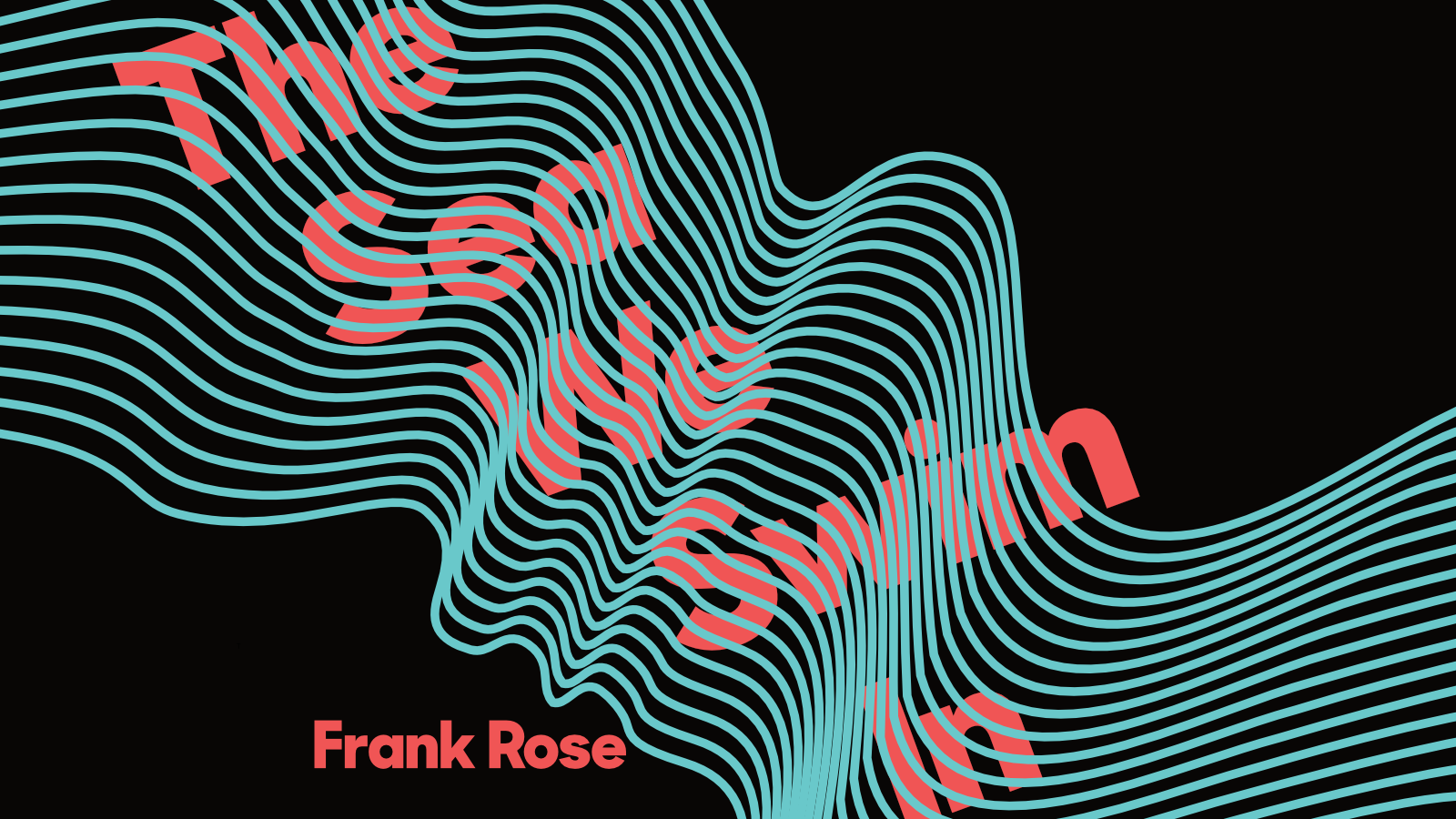





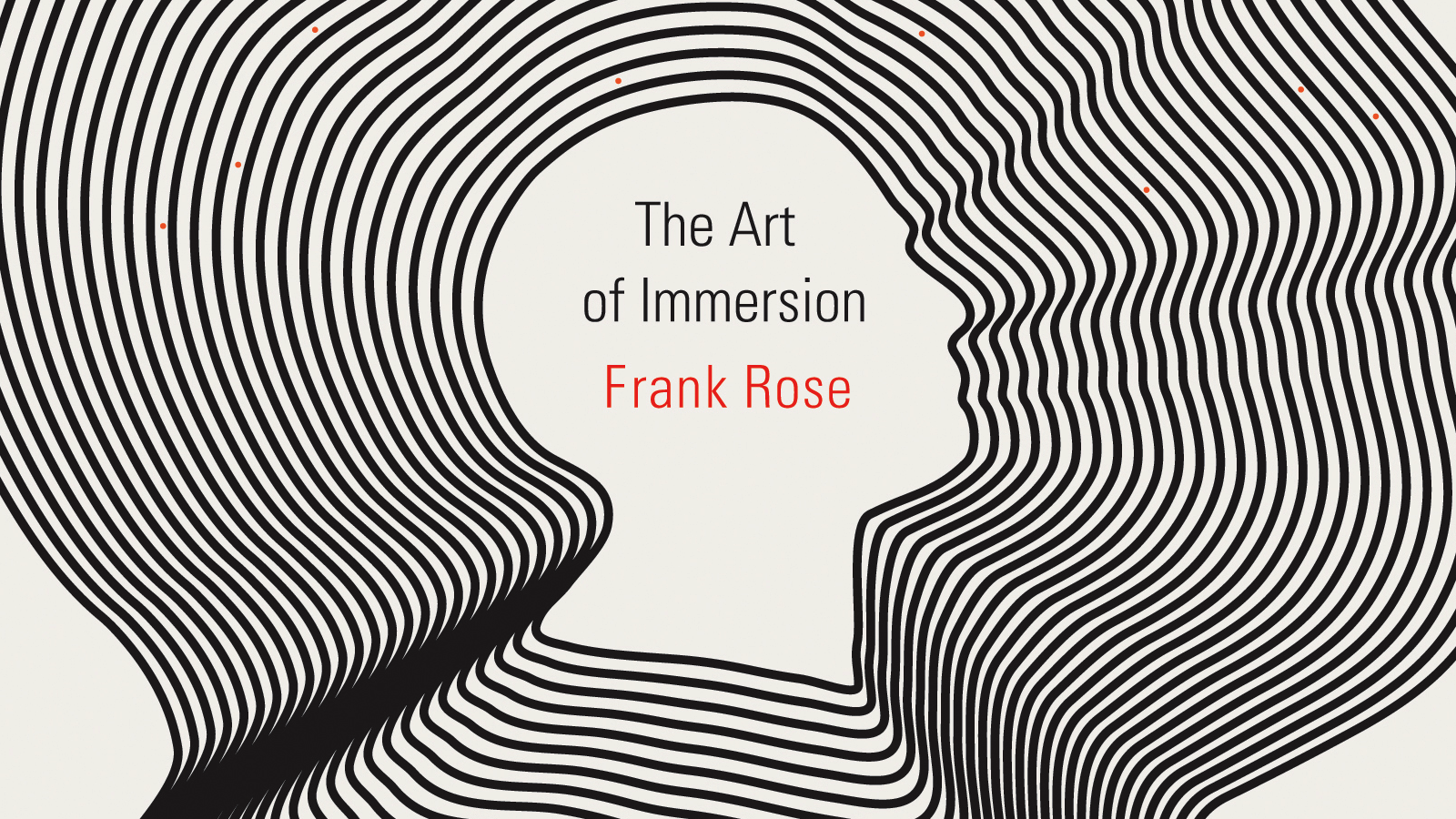
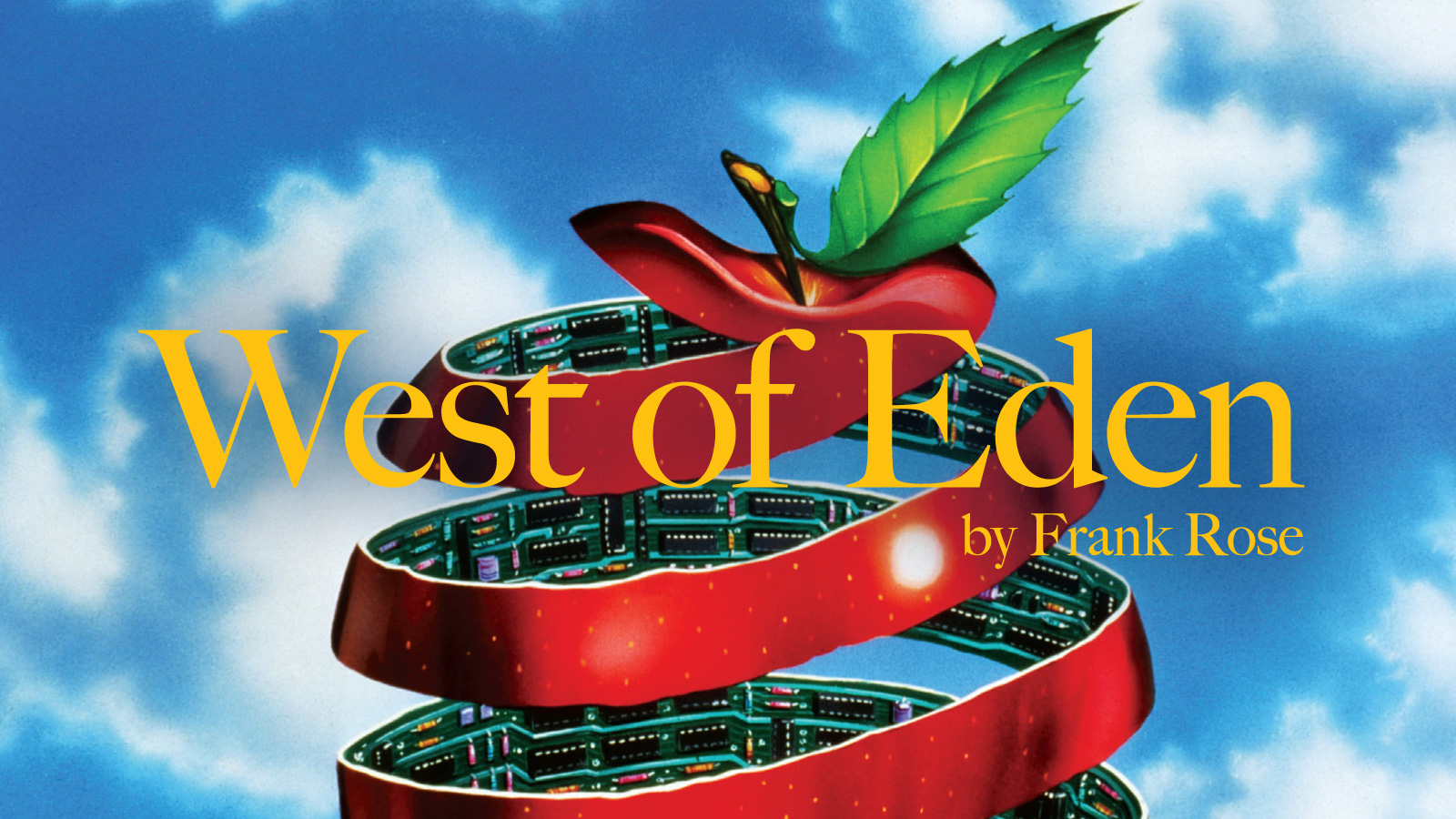


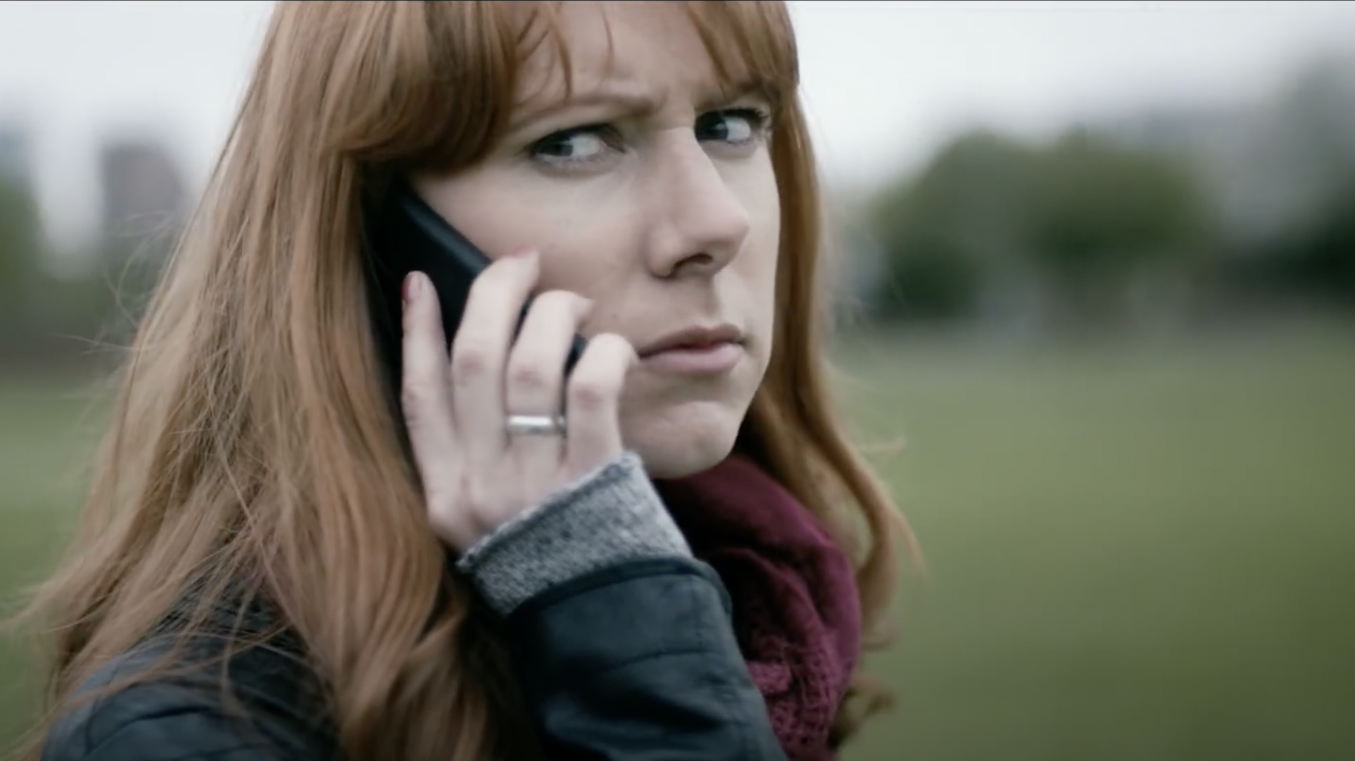
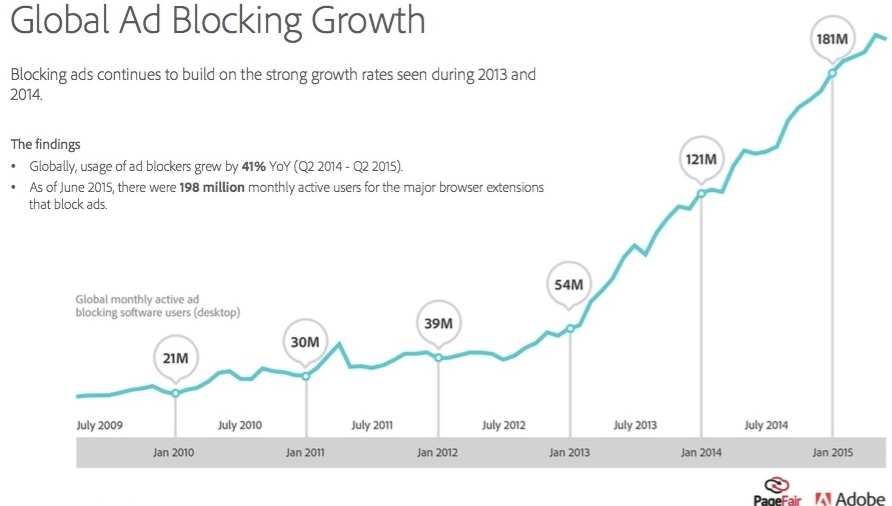
Comments
Comments are closed here.